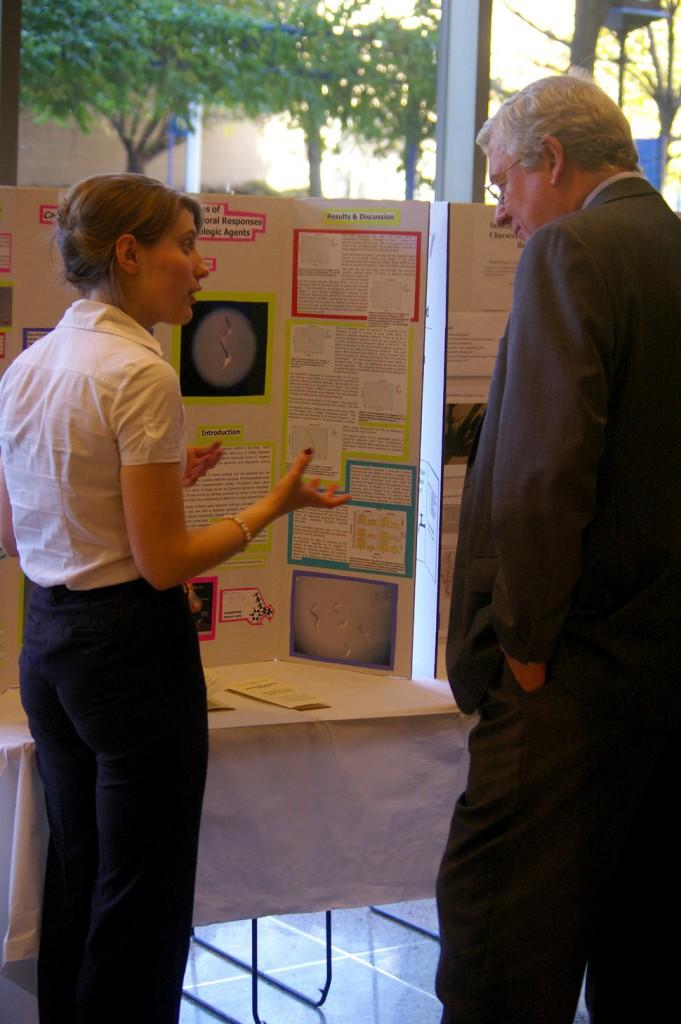Students Showcase Research at Annual Fair
June 19, 2011
Published: November 17, 2010
Is there one place you can learn about whether or not fruit flies can detect magnetic fields, how microwaves catalyze the oxidation of 3-methylpyridine to form Vitamin B3 and the state of public health in the developing world, all before getting to class on time? These were among some of the topics displayed by students at the ninth annual research fair in the Lowenstein lobby of Fordham College at Lincoln Center (FCLC) on Nov. 11. This year, the research fair saw more participants than ever before, with about 30 students displaying mentor guided research to both their peers and Fordham faculty.

Founded by the Natural Sciences department at Fordham, the annual research fair serves to highlight student research, either conducted with Fordham faculty or with external mentors. Participating students are encouraged to speak about their work with in a way that is accessible and interesting to a diverse crowd of both scientists and non-scientists.
“The enthusiasm I saw from non-science majors was especially encouraging,” said Carlisdania Mendoza, FCLC ’11, who presented a poster entitled “Genotypic and Phenotypic Characterization of the Drosophila Mutant, fried.” “I was amazed that people were interested in my research.”
This enthusiasm was reflected in the overall atmosphere of the research fair with a buzz of intrigue as questions were continually being asked. As a history major, Kevin Longwell, FCLC ’11, walked away from a poster entitled “Synthesis of the Pentafluorosulafanyl Acetaldehyde.” He remarked excitedly, “Would you look at that, learning before class!”
The research of student participants broadly spanned fields such as genetics and palynology (pollen analysis), and many projects were interdisciplinary in nature, blending fields such as ecology and biochemistry.
Although the fair was dominated by Natural Science students, several Liberal Arts students gave presentations that added to the diversity of the fair. A multimedia project entitled “Smoking and College Students,” done as collaborative effort between Laura Chang, Faith Heaphy, Jennifer Lane and Natalia Ramirez, all FCLC ’12, documented firsthand accounts of a smoker’s motivations, as well as critical evaluations of the habit itself.
The research fair was followed by an awards ceremony at which each student researcher was awarded a certificate of participation. “This is meant to celebrate and encourage student research as well as underscore the significant contributions research makes to our everyday lives,” said Dr. Vernon, chair of the Natural Sciences Department.
Rev. Robert R. Grimes, S.J., concluded the event with a speech that encapsulated the great triumph of the fair and the students who participated. “One of the reasons we call FCLC a close knit intellectual and creative community is because we expect students not just to receive knowledge but to create new knowledge, and it is in the type of research we see at the research fair that we see our students at their most creative.”












